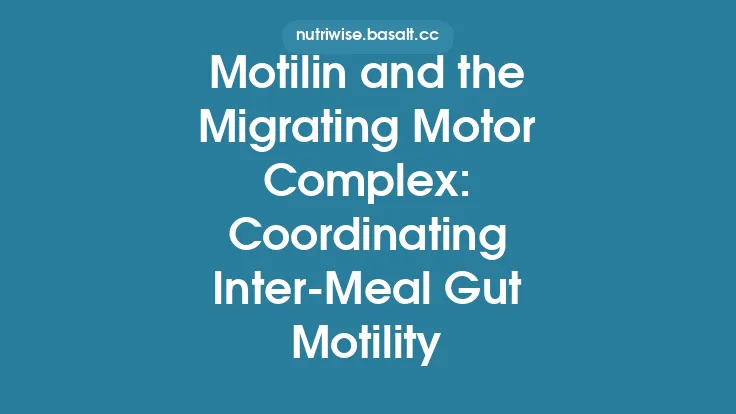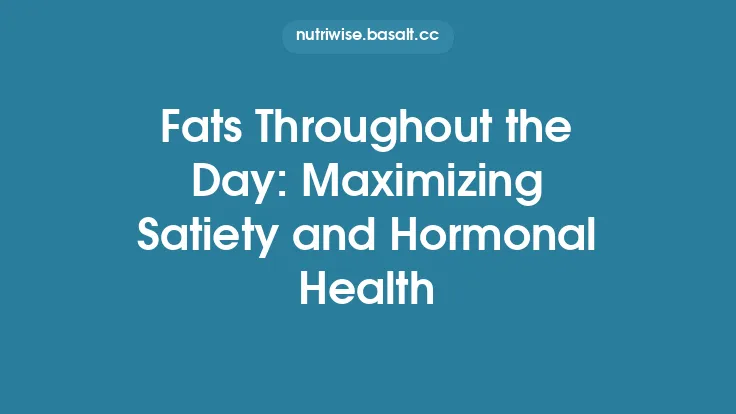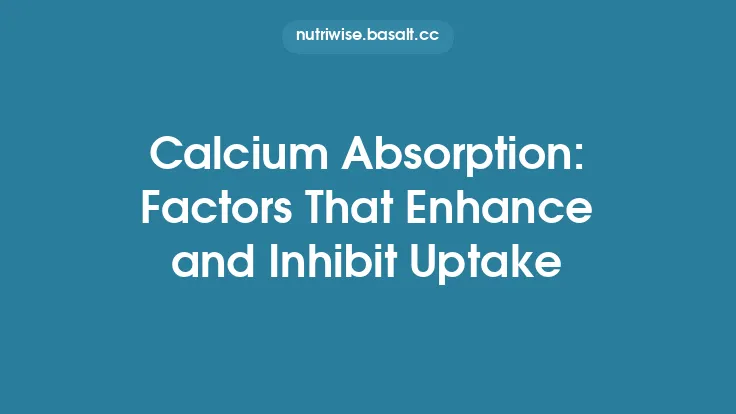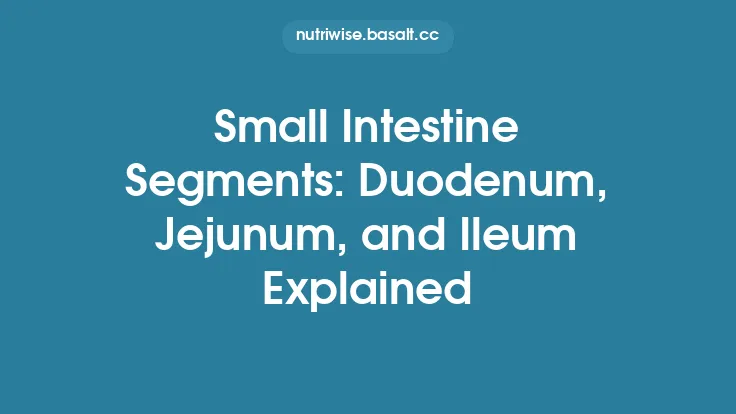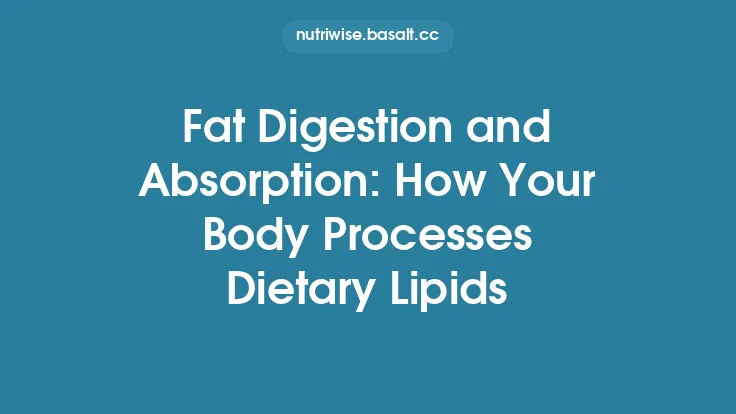Gastric emptying and intestinal absorption are not independent events; they are tightly coordinated by a network of hormones that sense the composition of the luminal contents, relay information to the central nervous system, and adjust motility and transport processes in real time. This orchestration ensures that nutrients are delivered to the small intestine at a rate that matches the absorptive capacity of the mucosa, preventing overload, optimizing post‑prandial glucose handling, and maintaining overall energy balance. Below is a comprehensive look at the principal hormonal feedback loops that synchronize these two critical phases of digestion.
The Core Hormonal Cast
| Hormone | Primary Source | Main Receptor(s) | Principal Actions Relevant to Gastric Emptying & Absorption |
|---|---|---|---|
| Peptide YY (PYY) | L‑cells of the distal ileum and colon | Y1, Y2, Y5 (G‑protein coupled) | Slows gastric emptying, reduces intestinal motility, promotes water and electrolyte absorption |
| Glucagon‑like peptide‑2 (GLP‑2) | L‑cells of the distal small intestine | GLP‑2R (GPCR) | Enhances mucosal growth, up‑regulates nutrient transporters, modestly decelerates gastric emptying |
| Neurotensin (NT) | N‑cells of the jejunum and ileum | Neurotensin receptors NTR1, NTR2 | Stimulates intestinal smooth‑muscle contraction, promotes bile and pancreatic fluid secretion, modulates gastric motility |
| Somatostatin | D‑cells scattered throughout the stomach, duodenum, and pancreas | SSTR1‑5 (GPCR) | Inhibits gastric acid secretion, reduces gastric motility, dampens intestinal hormone release |
| Oxyntomodulin (OXM) | L‑cells (co‑secreted with GLP‑1 and PYY) | GLP‑1R (low affinity) & glucagon receptor | Decreases gastric emptying, increases energy expenditure, modestly stimulates intestinal motility |
| Pancreatic Polypeptide (PP) | PP cells (F‑cells) of the pancreatic islets | Y4 receptor (GPCR) | Inhibits gastric emptying, reduces pancreatic exocrine secretion, modulates satiety signals |
| Enteroglucagon (also called “intestinal glucagon”) | L‑cells of the distal small intestine | Glucagon receptor (low affinity) | Slows gastric emptying, promotes intestinal growth, enhances nutrient absorption |
| Vasoactive Intestinal Peptide (VIP) | Enteric neurons and endocrine cells | VPAC1/VPAC2 (GPCR) | Relaxes smooth muscle, stimulates intestinal secretion, indirectly influences gastric emptying via neural pathways |
These hormones are released in response to specific luminal cues—most notably the presence of macronutrients (especially fats and proteins), osmolarity, and stretch. Their actions are fine‑tuned by both local (paracrine) and systemic (endocrine) mechanisms, creating a dynamic feedback system.
How Hormones Modulate Gastric Emptying
- Nutrient‑Triggered Release
- Fats and proteins reaching the duodenum stimulate L‑cells to secrete PYY, OXM, and GLP‑2. Simultaneously, N‑cells release neurotensin. The rise in these hormones signals that the proximal gut is processing a substantial load.
- Vagal Afferent Signaling
- Hormones such as PYY and OXM bind to receptors on vagal afferent fibers, transmitting a “full‑stomach” signal to the nucleus tractus solitarius (NTS). The NTS, in turn, modulates the dorsal motor nucleus of the vagus (DMV) to reduce cholinergic outflow to the stomach, slowing fundic contractions and pyloric opening.
- Direct Smooth‑Muscle Effects
- Somatostatin and neurotensin act directly on gastric smooth muscle via their GPCRs, decreasing the frequency of antral peristaltic waves. This reduces the propulsive force that drives chyme toward the pylorus.
- Enteric Reflex Loops
- VIP released from enteric neurons in response to luminal stretch induces relaxation of the gastric antrum, while simultaneously promoting secretion in the small intestine. The net effect is a temporary “hold” on gastric emptying until the intestine is ready to handle the incoming bolus.
Collectively, these mechanisms ensure that the stomach does not empty its contents faster than the small intestine can absorb them, preventing post‑prandial discomfort and malabsorption.
Hormonal Coordination of Intestinal Absorption
- Mucosal Growth and Transporter Up‑regulation
- GLP‑2 is a potent trophic factor for the intestinal epithelium. It stimulates crypt cell proliferation, villus heightening, and the expression of nutrient transporters (e.g., SGLT1 for glucose, PEPT1 for di‑ and tripeptides). By expanding absorptive surface area, GLP‑2 prepares the intestine for the incoming load.
- Modulation of Blood Flow
- Neurotensin and VIP increase mesenteric blood flow through nitric oxide (NO)–mediated vasodilation. Enhanced perfusion improves the delivery of absorbed nutrients to the portal circulation and supports active transport processes.
- Regulation of Electrolyte and Water Transport
- PYY acts on Y2 receptors in the colon to promote water and sodium reabsorption, thereby fine‑tuning the luminal environment for optimal nutrient solubilization and transporter activity.
- Feedback Inhibition of Further Hormone Release
- As absorption proceeds, rising plasma concentrations of glucose, amino acids, and fatty acids stimulate somatostatin release from D‑cells. Somatostatin, in turn, suppresses further secretion of PYY, OXM, and neurotensin, preventing excessive slowing of motility and allowing the next gastric emptying wave to proceed.
These loops create a self‑regulating system where the intestine’s absorptive capacity directly influences the hormonal milieu that controls upstream gastric emptying.
Integrated Feedback Loops: The “Closed‑Loop” Model
- Initial Meal Arrival
- Food enters the stomach → gastric distension triggers vagal afferents → modest release of PP and somatostatin → baseline gastric motility.
- Duodenal Sensing
- As chyme reaches the duodenum, fats and proteins stimulate L‑cells → rapid rise in PYY, OXM, GLP‑2; N‑cells release neurotensin.
- Signal Transmission
- Hormones bind to vagal afferents and enteric neurons → NTS/DVM modulation → reduced gastric contractility and delayed pyloric opening.
- Intestinal Preparation
- GLP‑2 promotes mucosal growth; neurotensin and VIP increase mesenteric flow; PYY enhances water reabsorption.
- Absorptive Phase
- Nutrients are taken up → plasma nutrient levels rise → D‑cells release somatostatin → inhibition of further PYY/NT release.
- Reset and Cycle Continuation
- Decreased inhibitory hormone levels relieve the brake on gastric emptying → next bolus is allowed to pass → the loop repeats until the meal is cleared.
This closed‑loop architecture ensures that each segment of the gastrointestinal tract operates in concert, matching delivery speed with absorptive demand.
Clinical Implications of Disrupted Hormonal Loops
| Condition | Perturbed Hormone(s) | Typical Consequence | Therapeutic Insight |
|---|---|---|---|
| Diabetic gastroparesis | Reduced PYY and OXM response; exaggerated somatostatin | Delayed gastric emptying, erratic glucose excursions | PYY analogs or OXM mimetics can modestly accelerate emptying |
| Short bowel syndrome | Deficient GLP‑2 and neurotensin | Malabsorption, weight loss | GLP‑2 analog (teduglutide) promotes mucosal growth and improves absorption |
| Functional dyspepsia | Hyperactive somatostatin release | Premature gastric emptying inhibition, early satiety | Somatostatin receptor antagonists under investigation |
| Obesity | Elevated post‑prandial PYY and OXM (adaptive) | Reduced appetite, slower emptying | Leveraging PYY/ OXM pathways for weight‑loss pharmacotherapy |
Understanding these loops provides a mechanistic basis for targeted interventions that restore the balance between gastric emptying and intestinal absorption.
Emerging Research Directions
- Dual‑agonist peptides that simultaneously activate Y2 (PYY) and GLP‑2 receptors are being explored to synergistically slow gastric emptying while enhancing mucosal absorptive capacity.
- Microbiota‑derived metabolites (e.g., short‑chain fatty acids) have been shown to stimulate PYY and GLP‑2 release, suggesting a gut‑microbiome axis that could be harnessed to fine‑tune digestive timing.
- Neuro‑gastroenterology: Advanced imaging of vagal afferent activity is revealing how central processing of hormonal signals integrates with emotional and stress responses, potentially linking psychological states to dysregulated emptying.
Key Take‑aways
- A suite of hormones—principally PYY, GLP‑2, neurotensin, somatostatin, oxyntomodulin, pancreatic polypeptide, enteroglucagon, and VIP—forms an intricate feedback network that synchronizes the rate of gastric emptying with the absorptive capacity of the small intestine.
- These hormones act through a combination of vagal afferent modulation, direct smooth‑muscle effects, paracrine signaling, and systemic vascular adjustments.
- The feedback loops are self‑limiting: as absorption proceeds, rising nutrient levels trigger inhibitory hormones (e.g., somatostatin) that relieve the brake on gastric emptying, allowing the next wave of chyme to pass.
- Disruption of any component of this network can lead to clinically significant motility or absorptive disorders, offering clear targets for therapeutic development.
- Ongoing research into multi‑receptor agonists, microbiota‑hormone interactions, and neuro‑gastroenteric signaling promises to deepen our ability to manipulate these loops for improved metabolic health.
By appreciating the elegance of these hormonal feedback loops, scientists, clinicians, and food technologists can better predict how dietary composition influences digestive timing, design functional foods that modulate hormone release, and develop pharmacologic agents that restore harmony between gastric emptying and intestinal absorption.
